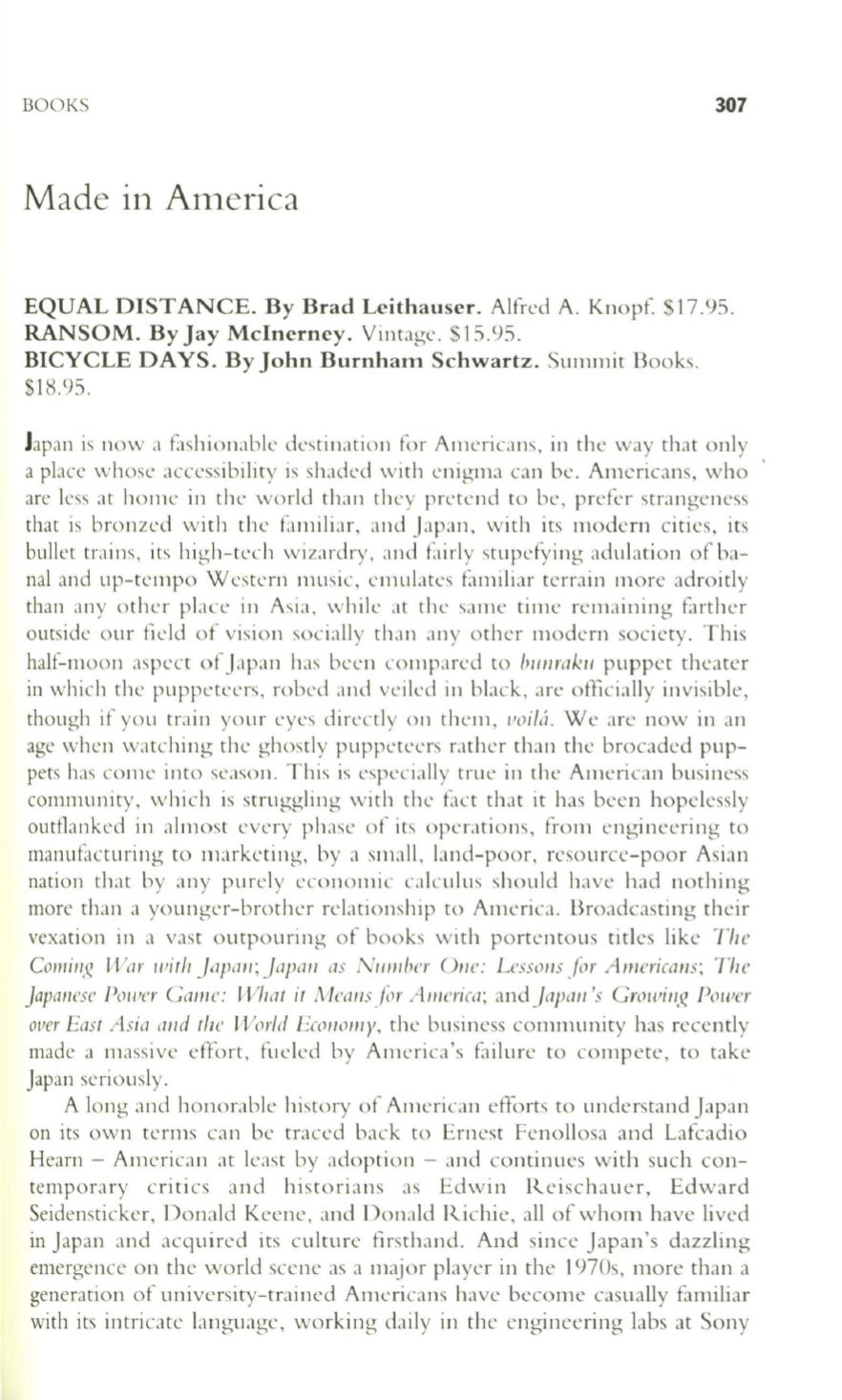
BOOKS
307
Made in America
EQUAL DISTANCE. By Brad Leithauser.
Alfred A. Kn opf. $ 17.95.
RANSOM. By Jay McInerney.
Vintage. S 15.95.
BICYCLE DAYS. By John Burnham Schwartz.
Summit Books.
$18.95.
Japan is now a f.1shionable destination for Americans, in the way that on ly
a place whose accessibi lity is shaded with enigma can be. Americans, who
are less at home in the world than they pretend to be , prefer strangeness
that is bronzed wit h the f;1I11i li ar, and japan, with its modern cities, its
bullet trains, its hi g h-tec h wizardry, and f.li rl y stupefYing adulation ofba–
nal and up-tempo Western music, emu lates f.1m iliar terrain more adroitly
than any other place in Asia , while at the same time remaining farthe r
outside our field of vision soc ially than any other modern society. This
half-moon aspect of japan has been compared to
!Jllllralw
puppet theater
in which the puppeteers, robed and veiled in black, arc officia ll y invisible,
though if you train your eyes directly o n them ,
floila.
We are now in an
age when watching the ghostly puppeteers rather than the brocaded pup–
pets has come into seaSOIl. This is espec iall y true in the American business
community, whic h is struggling w ith the fact that it has been hope lessly
outflanked in almost every phase of its operations, from engineering to
manufacturing to marketing, by a sma ll , land-poor, resource-poor Asian
nation that by any purely economic calc ulu s shou ld have had nothing
more than a younger-brother relationship to America. 13roadcasting their
vexation in a vast outpouring of books with portentous titles like
The
COli/iII,'.!
I
Va/' Il'ilh Japall; Japall as Nlllllbcr
Oil£'."
Lesso ll s .f<)r A lll ericalls; The
j apal/csc POlflcr Call1 c:
I Vlwl
il
Mcallsj<,y Alllcrica; andJapall's Crowillg POilier
over Easl Asia alld fhe World EWIIOIIIY,
the business community has recently
made a massive effort, fueled by America's fai lure to compete, to take
Japan seriously.
A long 3nd honorable history of American efforts to understand j apan
on its own terms can be tr3ced back to Ernest Fenollosa and Lafcadio
Hearn - American at least by adoption - and con tinu es with such con–
temp orary crit ics and histori3ns as Edwin Reischauer, Edward
Seidensticker, Donald Keene, and Donald Ri chi e, all of whom have li ved
in japan and acquired its cu lture firsthand. And since japan 's dazzling
emergence on the world scene as a major player in the 1970s, more than a
generation of university-trained Amerions have become casua lly fami li ar
with its intriClte langua ge, working daily in the engin eerin g labs at Sony


